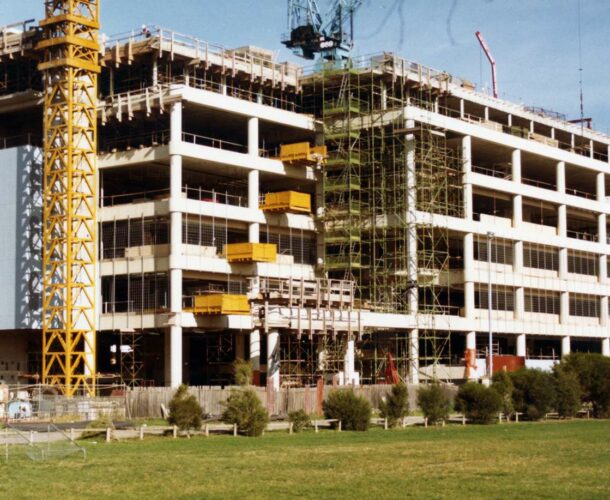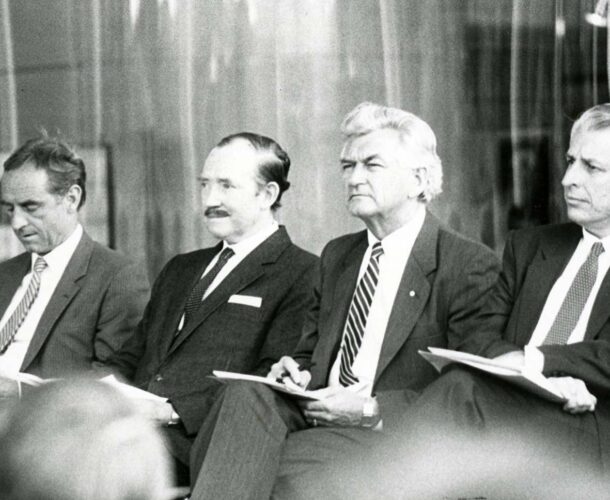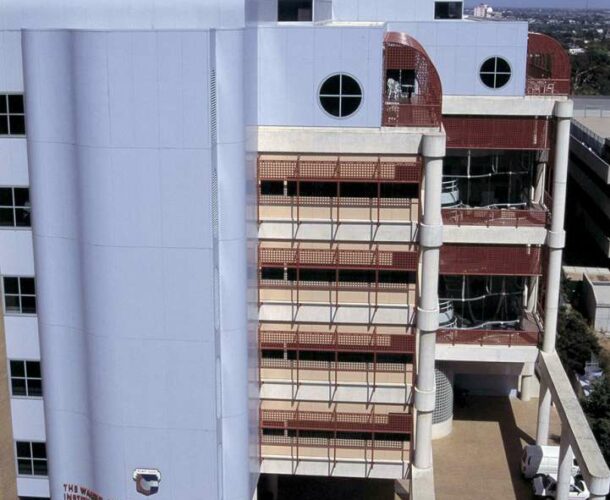The pressure for more space has become ever more insistent, we have reached the limits of our plumbing and electrical capacity. The institute director Sir Gustav Nossal is told by our engineer to “cease and desist” in growing our building on Royal Parade.
Dr Graham Mitchell has made great advances in the field of immunoparasitology and the Adams-Cory laboratory is pushing into genetic engineering. These developments force the institute’s management to provide a permanent solution to the expansion of laboratories and technical support services. The answer is a brand new building.
Obtaining a site and funding
Finding a site for the new building is no easy matter, while Nossal is adamant the institute stay within the Royal Melbourne Hospital grounds, at least two prominent surgeons are expressively opposed. To our rescue comes Dr Len Weickhardt, Chancellor of the University of Melbourne and President of the Royal Melbourne Hospital. Weickhardt finds a site on the hospital grounds, pushes the vote through the hospital board, and wins the day with a narrow majority.
Obtaining the funds is also a delicate task; plans are laid carefully. The institute’s president Sir Andrew Grimwade confirms his friendship with the Australian Prime Minister and Nossal commissions architects to produce a model to fit the site for presentation to the Victorian Premier and Australian Government ministers. In the meantime, small design firm Daryl Jackson is appointed, with Godfrey and Spowers acting as architects in association. By January 1981 both governments have approved the study and plan for construction, committing themselves to financing the building to a total of $22.7 million.
Architecturally spectacular
To develop the building’s design, Daryl Jackson and his senior colleagues instigate a tour to examine the world’s best laboratories and ensure the new institute will meet international standards.
A theory of the scientist as a worker, artist and craftsman working in a laboratory combined with the thinker evolves, leading to the development of a lecture theatre, board room, seminar rooms, library and tea room. The architects create spaces for staff and students to meet with Nobel Prize winners and influential scientists, over tea and biscuits, to discuss scientific questions and explore ideas.
Grand opening of the new building
Due to industrial disputes, what should take two and a half years to construct takes four years. Nossal is determined to officially open the building in November 1985 and invites a “galaxy of stars” to the event. Luckily he is able to hide the fact from most guests that the building is not completely finished.
The last of the laboratory groups complete their move in April 1986.












